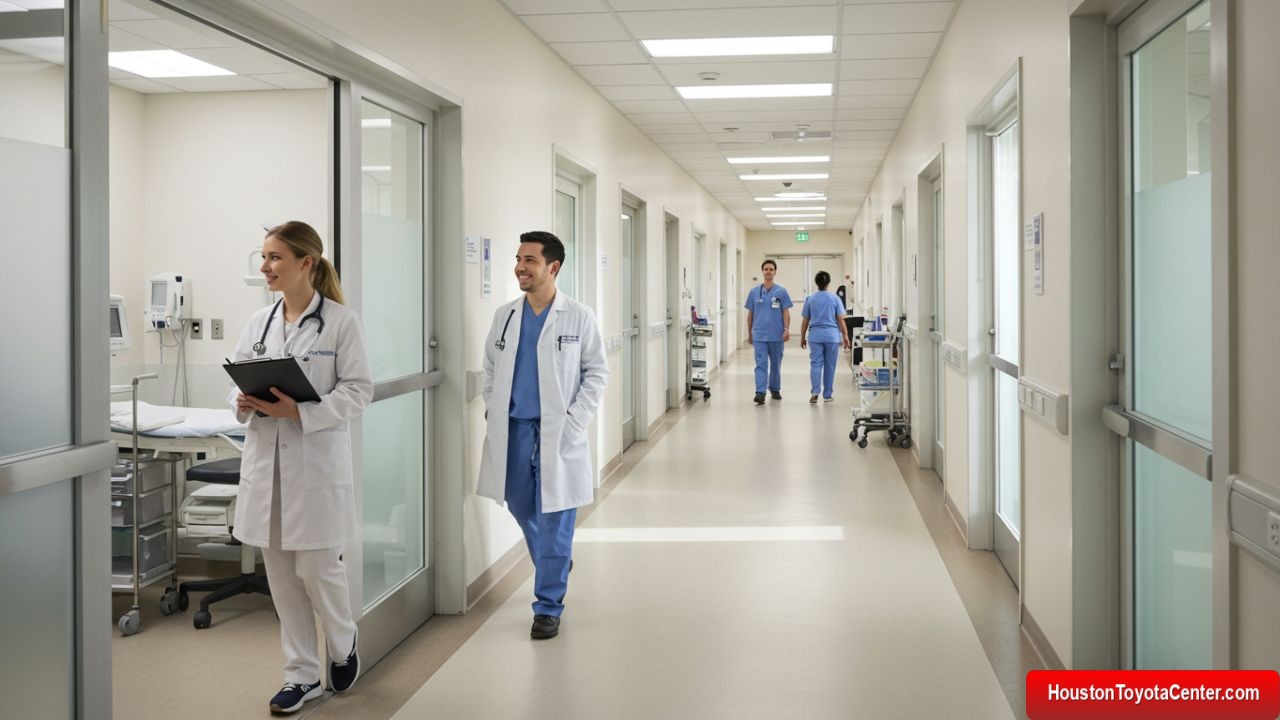The Texas Medical Center (TMC) in Houston is the largest medical complex in the world, encompassing more than 60 member institutions dedicated to patient care, research, and education. Its development is a testament to vision, collaboration, and innovation in the fields of healthcare and life sciences. This article traces the history, growth, and ongoing impact of the TMC, highlighting its contributions to medical advancements and the broader community.
The Origins of the Texas Medical Center
The seeds of the TMC were sown in the early 20th century when Houston was emerging as a major metropolitan hub. A combination of philanthropy, political will, and civic ambition played a crucial role in its establishment.
M.D. Anderson’s Vision: In 1941, Monroe Dunaway Anderson, a prominent Houston businessman and philanthropist, laid the groundwork for what would become the TMC. His foundation, the M.D. Anderson Foundation, donated land and funding to attract medical institutions to Houston. This philanthropic initiative was pivotal, ensuring that Houston became a center for healthcare excellence.
Foundational Institutions: One of the first institutions to anchor the TMC was the Baylor College of Medicine, which moved to Houston from Dallas in 1943. Shortly thereafter, the M.D. Anderson Cancer Center was established, solidifying the TMC’s focus on advanced research and treatment. These early institutions set the tone for the TMC’s collaborative and innovative ethos.
FREE: Quickly identify and understand problems with your vehicle 🚘
CLICK HEREGrowth Through Collaboration
The TMC’s growth has been marked by its ability to bring together diverse stakeholders. Hospitals, universities, and research centers have coexisted and collaborated to foster innovation and improve patient outcomes.
Hospital Expansion: By the mid-20th century, several renowned hospitals had joined the TMC, including Texas Children’s Hospital, Houston Methodist Hospital, and Memorial Hermann-Texas Medical Center. Each institution brought unique expertise, contributing to the TMC’s comprehensive approach to healthcare.
Educational Partnerships: The presence of educational institutions such as Baylor College of Medicine, the University of Texas Health Science Center at Houston (UTHealth), and Texas Southern University has strengthened the TMC’s role as a hub for medical education. These institutions have trained generations of healthcare professionals, many of whom remain in Houston to practice and conduct research.
Research Synergies: Collaboration among TMC institutions has led to groundbreaking research. For example, the development of life-saving treatments, such as cancer therapies and cardiovascular procedures, has been accelerated by the combined expertise of TMC members.
Milestones in Medical Innovation
The TMC has been at the forefront of numerous medical breakthroughs. Its institutions have pioneered advancements in areas such as transplantation, cancer treatment, and neurology.
Heart Surgery: In 1968, Dr. Denton Cooley performed the first successful human heart transplant in the United States at the Texas Heart Institute, part of the TMC. This achievement cemented the TMC’s reputation as a leader in cardiovascular care.
Cancer Research: The M.D. Anderson Cancer Center has consistently been ranked among the top cancer treatment facilities globally. Its contributions to oncology include innovative therapies, clinical trials, and a robust focus on prevention and early detection.
Neuroscience: The development of advanced neurological treatments and surgical techniques has been another hallmark of the TMC. Institutions like the Baylor College of Medicine’s Department of Neuroscience have made significant contributions to understanding and treating brain disorders.
Economic and Social Impact
The TMC is not only a medical powerhouse but also a major economic driver for Houston and beyond. Its influence extends to job creation, technological innovation, and urban development.
Employment: The TMC employs over 100,000 people, making it one of the largest employers in the region. Its workforce includes doctors, nurses, researchers, educators, and support staff, all contributing to its mission.
Technological Advancements: Houston’s reputation as a center for innovation has been bolstered by the TMC’s focus on integrating cutting-edge technologies. The establishment of TMC Innovation, an accelerator for medical startups, has attracted entrepreneurs and investors from around the world.
Urban Development: The TMC’s growth has spurred significant urban development in Houston. The area surrounding the TMC has seen the construction of residential complexes, hotels, and retail spaces, transforming it into a vibrant district.
Challenges and Opportunities
Despite its many successes, the TMC faces challenges that require strategic planning and collaboration. Issues such as rising healthcare costs, disparities in access to care, and the need for sustainable development are ongoing concerns.
Access to Care: Ensuring that all patients, regardless of socioeconomic status, can access the world-class care provided by TMC institutions remains a priority. Initiatives to address healthcare inequities are underway, but more work is needed.
Sustainability: As one of the largest medical complexes in the world, the TMC has a significant environmental footprint. Efforts to implement sustainable practices in construction, energy use, and waste management are critical for its long-term viability.
Global Collaboration: The TMC has the opportunity to expand its global reach through partnerships with international institutions. Sharing knowledge and resources can help address global health challenges and reinforce the TMC’s leadership position.
The Future of the Texas Medical Center
Looking ahead, the TMC is poised to continue its trajectory of growth and innovation. Several initiatives are shaping its future, including the development of new facilities and a focus on interdisciplinary collaboration.
TMC3: One of the most ambitious projects in the TMC’s history is TMC3, a collaborative research campus designed to bring together academia, industry, and clinical care. Slated to include state-of-the-art laboratories, office spaces, and public areas, TMC3 aims to accelerate the translation of research into real-world applications.
Digital Health: The integration of digital technologies, such as artificial intelligence and telemedicine, is transforming the way care is delivered. The TMC is investing in digital health initiatives to improve patient outcomes and streamline operations.
Community Engagement: The TMC’s institutions are increasingly engaging with the local community to promote health education and preventive care. Programs targeting chronic diseases, maternal health, and mental wellness are helping to build a healthier Houston.
Conclusion
The Texas Medical Center in Houston is a shining example of what can be achieved through vision, collaboration, and dedication to excellence. From its humble beginnings to its current status as a global leader in healthcare and research, the TMC has had an indelible impact on medicine and society. As it continues to grow and innovate, the TMC remains a beacon of hope and a testament to the power of human ingenuity.


Leave a Reply